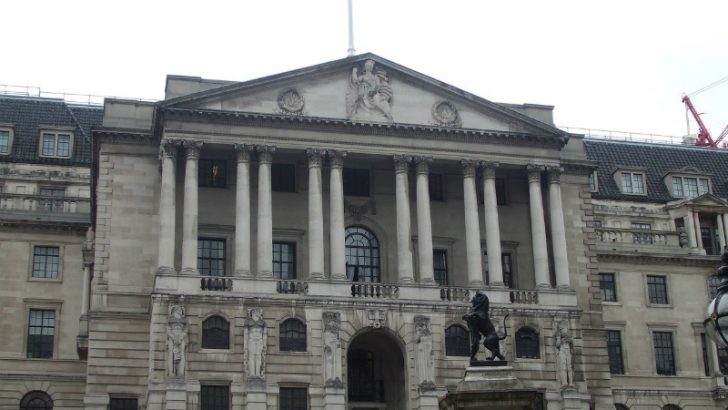
The Bank of England (BoE) has released a new working paper entitled “The economics of distributed ledger technology for securities settlements”:
- examines to what extent DLT could add value and change securities settlement
- characterize the innovation process in the post-trade industry.
- describes the economics of a hypothetical DLT-based security settlement industry.
In this context, distributed ledger technology (DLT, often known as blockchain) is a database architecture which:
- enables the keeping and sharing of records in a distributed and decentralized way
- ensures its integrity through the use of consensus-based validation protocols and cryptographic signatures.
To the BoE, “DLT has the potential to reduce costs and increase the efficiency of securities settlement, the ultimate step of every security transaction“.
DL/DLT background
‘Distributed ledger’ (DL) is the term which describes a varied collection of technologies. Generally these most understand DL as a decentralized dataset architecture which enables the keeping and sharing of records in a synchronized way. This is while ensuring their integrity through the use of consensus-based validation protocols and cryptographic signatures.
Distributed data processing refers to a system with data distributed across the participating nodes. This contrasts with the existence of a centralized server (in effect a common hub or hubs) that provides data processing services to all connected systems. Decentralisation means sharing of control of the database across multiple nodes and, by implication, multiple users.
These technologies are at the base of Bitcoin and other digital or cryptocurrencies. But they may have a much wider range of applications (ET has discussed food safety as well as trade finance as alternative examples.
The DL attractions, and fear
DL technology is currently attracting attention in securities settlement. To date, several DL developments exist. These include, for example:
- a joint project of the Australian Securities Exchange (ASX) with Digital Asset Holdings (DAH)
- a project by the Japan Exchange Group (JPX)
- a project between the Deutsche Börse in cooperation with Germany’s central bank.
The BoE fears that the number of DL network providers, and as a result the variety of future settlement services, may come with some form of monopoly pricing. This, in turn, may require (the BoE speculates) “that regulators could play a role in either ensuring more competitive outcomes or otherwise in regulating the industry so as to minimize deadweight losses and/or the unequal distribution of economic surplus“.
While the technological and implementation aspects of DL, in relation to post-trade processing, attract attention there continues to be less focus on:
- the economics and role of regulators
- understanding the key aspects of the economics of DLT, as it applies to securities
settlement - assessment of the implications of potential market failures
- consideration of possible regulatory interventions to mitigate or address such failures.
Three key DLT points from the BoE authors
“Overall, our paper makes three key points: First, while the current industrial structure of securities settlement appears to be inefficient and while DLT has the potential to eliminate some of these inefficiencies, there are still issues that need to be resolved in order to operationalize DLT and it is uncertain at this point how or if the technology will ultimately be used in securities settlement.
“Second, developing new technological know-how (whether it is DLT-based or not) with the aim of modernising securities settlement is akin to adding to a public good. For this reason, it is best if research and investment is done in a cooperative rather than competitive manner, which implies that public authorities and regulators can play an important role in facilitating such a cooperative outcome.
“Third, if a DL (or other) technological solution for settlement ultimately succeeds in replacing existing settlement methods, it is likely to be characterized by network externalities and decreasing average costs. This suggests that the industry may well retain its high degree of concentration. It is possible and likely that a small number of CSDs will be replaced by a small number of DL network providers and as a result future settlement services may be associated with some form of monopoly pricing. This, in turn, means that regulators could play a role in either ensuring more competitive outcomes or otherwise in regulating the industry so as to minimise deadweight losses and/or the unequal distribution of economic surplus.”
What does it mean
The BoE’s main conclusions are that:
- “DLT has the potential to improve efficiency and reduce costs in securities settlement”
- “the technology is still evolving, and it is uncertain at this point what form, if any, a DLT-based solution for securities settlement will ultimately take”
- “technological innovation in the post-trade industry is more likely to achieve its potential with some degree of co-ordination which could be facilitated by the relevant authorities”
- “if DLT-based securities settlement becomes a reality, then it is likely to be concentrated among a few providers”.
It is this last aspect which should concentrate enterprise minds, because this need not apply to only the settlements industry. What would happen if (say) an Amazon, Facebook, Google, Microsoft or other tech behemoth could do the same in another industry?
In turn this argues for regulation, to avoid (or minimise) inefficient monopoly pricing or even efficient price discrimination. The fear is that too few DLT service providers can capture too much of a given market


























